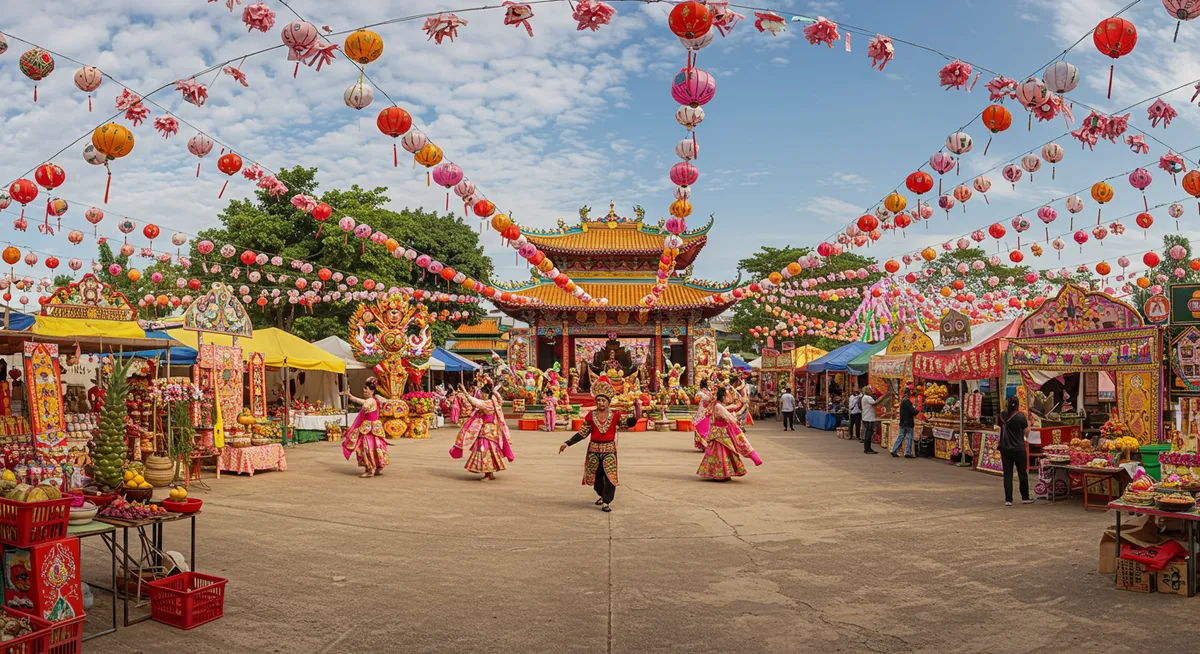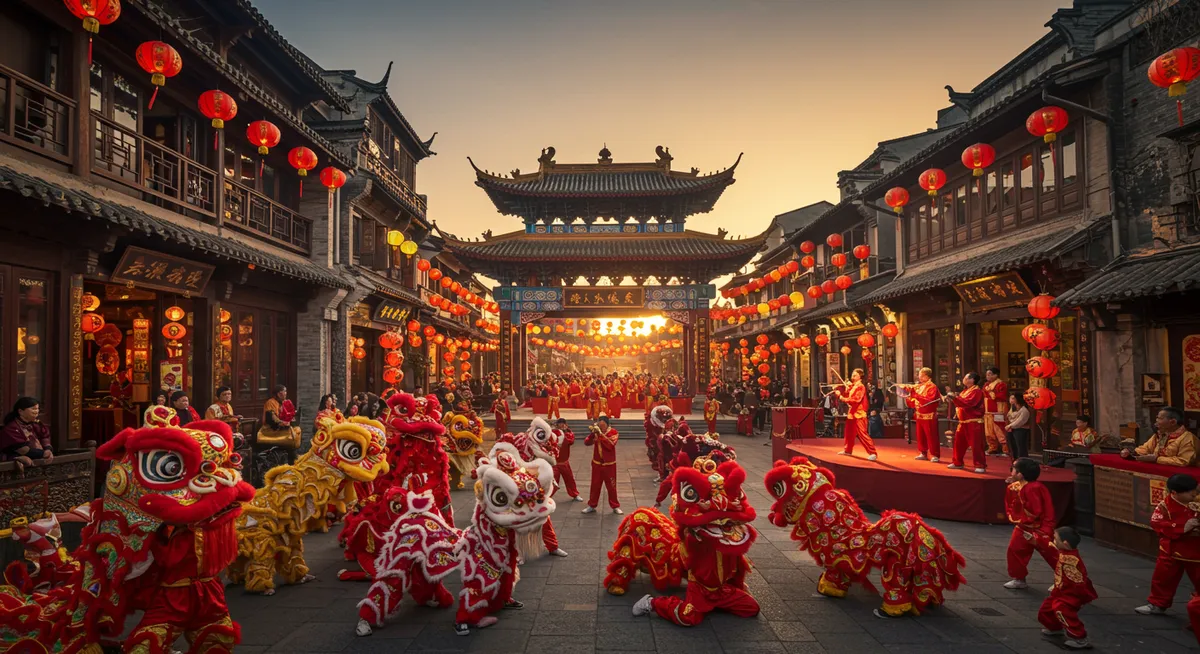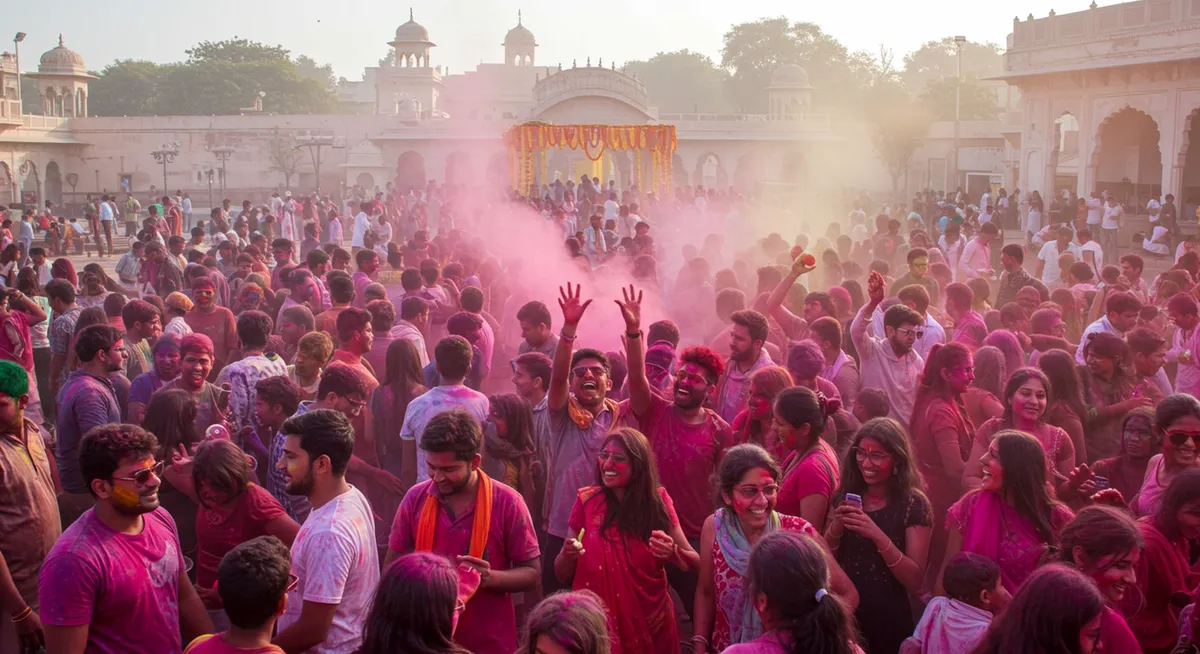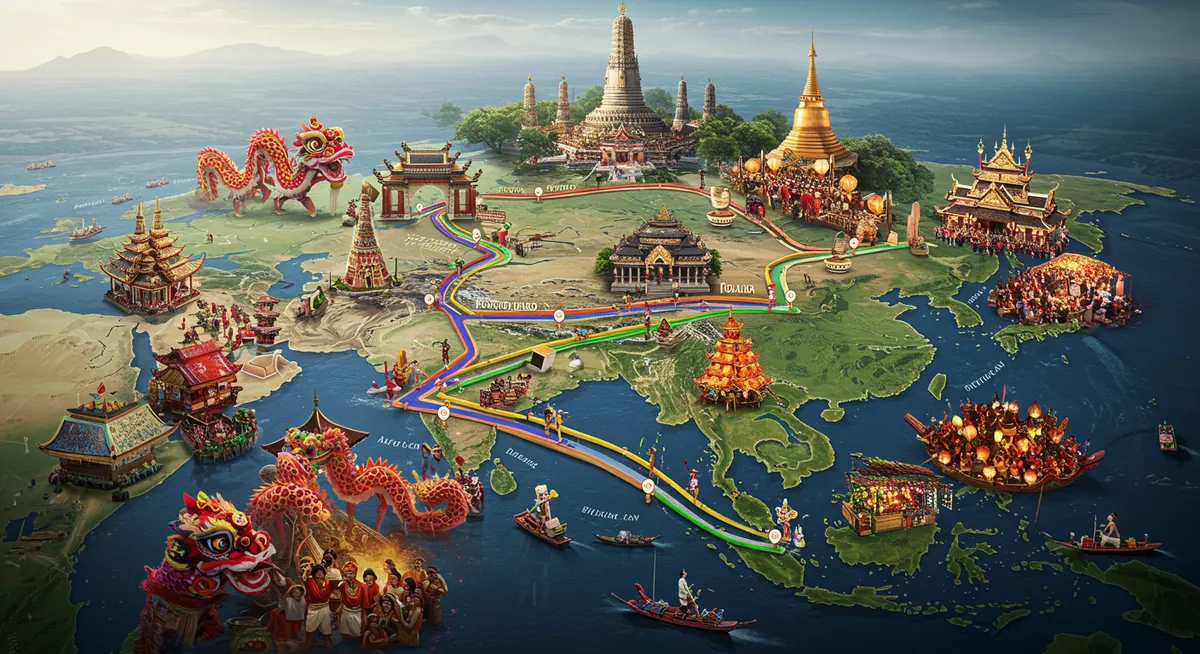Asian Cultural Festivals Guide | Ancient Traditions & Modern Celebrations

Asian Cultural Festivals: Ancient Traditions and Spiritual Ceremonies
Asia's festival landscape represents one of the world's richest tapestries of cultural expression, where ancient traditions continue alongside vibrant modern celebrations. From elaborate temple ceremonies in Southeast Asia to nomadic gatherings on the steppes of Central Asia, the continent's festivals offer travelers unparalleled opportunities to witness living heritage. This guide explores Asia's most significant cultural festivals across different regions, providing travelers with essential context and practical information for authentic cultural immersion experiences.

The Cultural Significance of Asian Festivals
Asian festivals emerge from several foundational influences that have shaped the continent's diverse cultural identities:
- Ancient Spiritual Traditions: Many Asian festivals have roots in the continent's indigenous spiritual beliefs and practices dating back thousands of years
- Religious Influences: Hindu, Buddhist, Confucian, Taoist, Islamic, and indigenous belief systems have created rich ceremonial traditions throughout Asia
- Agricultural Heritage: The rhythm of planting and harvesting continues to influence festival timing and themes across rural Asia
- Historical Commemorations: Significant historical events and legendary figures are honored through elaborate festival traditions
Major Asian Festival Categories
Asian festivals can be broadly categorized to help travelers find experiences that match their interests:
Lunar and Calendar Celebrations
Many Asian cultures follow lunar or lunisolar calendars that determine the timing of major festivals:
- Lunar New Year: Celebrated across East and Southeast Asia with distinct regional traditions, from China's Spring Festival to Korea's Seollal and Vietnam's Tết
- Mid-Autumn Festival: Harvest moon celebrations featuring mooncakes, lanterns, and family gatherings across East Asia
- Buddhist Calendar Observances: Events like Vesak (Buddha's birthday) celebrated with temple ceremonies and processions across Buddhist Asia

Religious and Spiritual Festivals
Asia's diverse religious traditions have created some of the world's most spectacular festival experiences:
- Hindu Festivals: From India's colorful Holi and light-filled Diwali to Bali's elaborate temple ceremonies
- Buddhist Celebrations: Thailand's Songkran water festival, Sri Lanka's Esala Perahera, and Tibet's mystical Cham dances
- Islamic Observances: Eid celebrations across South and Southeast Asia, with particularly distinctive traditions in Indonesia and Malaysia
- Shinto Festivals: Japan's vibrant matsuri traditions featuring elaborate floats, shrine processions, and community participation
Harvest and Seasonal Celebrations
Asia's agricultural heritage continues to influence festival traditions marking important seasonal transitions:
- Rice Harvest Festivals: Celebrations of agricultural abundance from Japan's Niiname-sai to Thailand's Royal Plowing Ceremony
- Flower Festivals: From Japan's cherry blossom viewings to India's Onam festival with elaborate flower carpets
- Monsoon Celebrations: Festivals marking the vital arrival and retreat of seasonal rains across South and Southeast Asia
Contemporary Cultural Festivals
Modern Asia has developed vibrant new festival traditions celebrating contemporary expressions:
- Film Festivals: International events in Tokyo, Busan, Shanghai, and Mumbai showcase Asian cinema
- Contemporary Arts Festivals: From Singapore's Biennale to Japan's Setouchi Triennale
- Modern Music and Culture Events: South Korea's K-pop festivals, Japan's anime celebrations, and India's literature festivals
Asian Festival Regions
Asian festivals reflect distinct regional characters shaped by geography, history, and cultural influences:
East Asia
China, Japan, Korea, Taiwan, and Mongolia offer festivals deeply rooted in ancient traditions with distinctive regional expressions:
- China's Spring Festival: The world's largest annual migration occurs as families reunite for elaborate multi-day celebrations with regional variations
- Japan's Matsuri Traditions: Thousands of local shrine festivals feature distinctive practices from Kyoto's Gion Matsuri to Aomori's Nebuta
- Korea's Seasonal Celebrations: From Seollal (Lunar New Year) to Chuseok (Harvest Festival) with traditional games and ancestor rituals
- Mongolia's Naadam Festival: The "Three Games of Men" (wrestling, horse racing, and archery) celebrate nomadic heritage
Southeast Asia
Thailand, Vietnam, Cambodia, Myanmar, Indonesia, Malaysia, and the Philippines blend indigenous traditions with Hindu, Buddhist, and Islamic influences:
- Thailand's Songkran: Buddhist New Year water festival combines spiritual cleansing with joyful water fights
- Bali's Ceremonial Calendar: Elaborate Hindu-influenced rituals including Galungan, Nyepi, and thousands of temple ceremonies
- Vietnam's Tết Celebrations: Family-centered Lunar New Year with distinctive food traditions and ancestral veneration
- Philippines' Sinulog Festival: Vibrant celebration honoring the Santo Niño with colorful parades and dancing
South Asia
India, Nepal, Sri Lanka, Bangladesh, and Bhutan offer some of Asia's most visually spectacular and spiritually significant festivals:
- India's Festival Diversity: From the color explosions of Holi to the lights of Diwali and thousands of regional celebrations
- Nepal's Living Goddess Traditions: Kumari ceremonies and distinctive Himalayan Buddhist festivals
- Sri Lanka's Esala Perahera: Kandy's spectacular procession featuring elaborately decorated elephants and traditional dancers
- Bhutan's Tsechu Festivals: Masked dance ceremonies in ancient monasteries revealing Buddhist teachings

Central Asia
Kazakhstan, Uzbekistan, Kyrgyzstan, Tajikistan, and Turkmenistan preserve distinctive traditions reflecting nomadic heritage and Silk Road influences:
- Nowruz Celebrations: Persian New Year traditions mark the spring equinox across Central Asia with distinctive local variations
- Kyrgyzstan's World Nomad Games: Modern revival of traditional nomadic sports and cultural expressions
- Uzbekistan's Silk and Spice Festival: Bukhara's celebration of its Silk Road heritage through crafts, music, and cuisine
- Kazakhstan's Nauryz Meyrami: Spring celebration featuring nomadic traditions, games, and community feasts
West Asia/Middle East
The western regions of Asia blend distinctive Arab, Persian, and Turkish cultural traditions:
- Turkey's Mesir Macunu Festival: Centuries-old celebration distributing traditional herbal paste from mosque domes
- Iran's Ancient Zoroastrian Festivals: Fire celebrations like Chaharshanbe Suri with pre-Islamic origins
- Gulf Region's Pearl Diving Festivals: Cultural revivals celebrating traditional pearl harvesting heritage
- Lebanon's Baalbeck International Festival: Cultural performances amid ancient Roman ruins
Planning Your Asian Festival Journey
Creating a memorable Asian festival experience requires thoughtful planning:
Seasonal Considerations
Asian festivals follow seasonal patterns that can guide your travel planning:
- Lunar New Year Season (Jan-Feb): East and Southeast Asia's most significant festival period
- Spring Festivals (Mar-May): Water festivals, flower celebrations, and agricultural ceremonies
- Summer Festival Season (Jun-Aug): Japanese Obon festivals, dragon boat races, and monsoon celebrations
- Autumn Harvest Festivals (Sep-Nov): Mid-Autumn Festival, harvest thanksgivings, and light festivals
- Winter Celebrations (Dec-Jan): Year-end festivals, solstice celebrations, and preparations for lunar new year
Regional Festival Routes
Maximize your cultural experiences by planning itineraries around festival clusters:
- Lunar New Year Circuit: Experience different expressions of the holiday across multiple countries
- Southeast Asian Water Festivals: Visit Thailand, Myanmar, and Laos during April water celebrations
- Himalayan Buddhist Circuit: Witness monastery festivals across Nepal, Bhutan, and Northern India
- Japanese Matsuri Season: Follow summer festival traditions across different Japanese regions
Practical Travel Considerations
Successful festival travel in Asia requires attention to practical details:
- Religious Sensitivities: Research appropriate dress and behavior for religious festivals
- Peak Travel Periods: Book accommodations well in advance during major holidays like Lunar New Year
- Weather Variations: Consider monsoon seasons and extreme temperature periods when planning
- Local Transportation: Research festival-specific transportation changes and potential road closures
- Rural Accessibility: Some of Asia's most authentic festivals occur in remote areas requiring special travel arrangements

Cultural Sensitivity at Asian Festivals
Many Asian festivals have deep spiritual significance requiring respectful participation:
- Temple Etiquette: Learn appropriate behavior and dress for religious sites central to many Asian festivals
- Photography Guidelines: Understand when and where photography is welcome or prohibited during ceremonies
- Ritual Participation: Know when visitors are welcome to participate in ceremonies and when observation is more appropriate
- Cultural Context: Research the meaning behind festival elements to deepen your appreciation and show respect
- Local Customs: Follow local practices regarding shoes, head coverings, and appropriate clothing
Asian Festival Highlights Calendar
While many Asian festivals follow lunar calendars with changing dates each year, this general timeline can help you plan your experiences:
- January: Harbin Ice Festival (China), Wakakusa Yamayaki (Japan)
- February: Lunar New Year across East/Southeast Asia, Sapporo Snow Festival (Japan)
- March: Holi (India/Nepal), Nyepi (Bali), Cherry Blossom Festivals (Japan)
- April: Songkran (Thailand), Thingyan (Myanmar), Hanami season (Japan)
- May: Vesak/Buddha Day across Buddhist Asia, Cheung Chau Bun Festival (Hong Kong)
- June: Dragon Boat Festivals across East Asia, Gion Matsuri begins (Japan)
- July: Naadam Festival (Mongolia), Rainforest World Music Festival (Malaysia)
- August: Ghost Festival/Obon (East Asia), Esala Perahera (Sri Lanka)
- September: Mid-Autumn/Mooncake Festival (East Asia), Pchum Ben (Cambodia)
- October: Vegetarian Festival (Thailand), Diwali (India and Hindu regions)
- November: Loy Krathong (Thailand), Pushkar Camel Fair (India)
- December: Dongzhi Festival (East Asia), Hornbill Festival (India)
Experience Asia's Living Cultural Heritage
Asian festivals offer travelers unparalleled opportunities to witness traditions that have shaped the continent's cultural identity for thousands of years. Whether you're drawn to the incense-filled temple ceremonies of Southeast Asia, the colorful street processions of South Asia, the ancestral rituals of East Asia, or the nomadic traditions of Central Asia, there's a festival experience that will transform your understanding of this extraordinary continent.
By approaching these celebrations with respectful curiosity and cultural awareness, you'll discover that Asian festivals provide some of the most profound and memorable travel experiences available anywhere in the world.
Browse Our Asian Festival Guides
Explore our detailed guides to specific Asian festivals organized by region and type:
East Asian Celebrations
Lunar New Year
The most important cultural celebration across East and Southeast Asia, with family reunions and ancient traditions.
Mid-Autumn Festival
Harvest moon celebration featuring mooncakes, lanterns, and family gatherings across East Asia.
Dongzhi Festival
Winter solstice celebration with warming foods, ancestral rituals, and seasonal traditions.
Ghost Festival
Ancient tradition honoring ancestors and appeasing wandering spirits with food offerings and ceremonies.
Dragon Boat Festivals
Exciting boat races, sticky rice dumplings, and ceremonies honoring the poet Qu Yuan.
Gion Matsuri
Japan's most famous festival featuring elaborate floats, traditional music, and Shinto ceremonies in Kyoto.
Southeast Asian Water Festivals and Celebrations
Songkran
Thailand's exuberant New Year water festival combining spiritual cleansing with joyful water fights.
Thingyan
Myanmar's New Year celebration with water ceremonies, religious rituals, and cultural performances.
Nyepi
Bali's extraordinary Day of Silence with demonic effigy parades followed by 24 hours of complete stillness.
Loy Krathong
Thailand's enchanting Festival of Lights when thousands of decorated offerings float on rivers and waterways.
Pchum Ben
Cambodia's sacred Festival of the Dead with ancestral offerings and Buddhist temple ceremonies.
Vegetarian Festival
Thailand's intense Taoist celebration featuring extreme body piercings, spiritual possession, and purification rituals.
South Asian Festivals
Holi
India's vibrant Festival of Colors celebrating spring with rainbow powder, music, and communal joy.
Diwali
The spectacular Festival of Lights illuminating homes across India and Hindu communities worldwide.
Pushkar Camel Fair
Rajasthan's extraordinary desert festival combining livestock trading, spiritual pilgrimages, and cultural showcases.
Esala Perahera
Sri Lanka's magnificent procession featuring elaborately decorated elephants, traditional dancers, and sacred relics.
Hornbill Festival
India's "Festival of Festivals" showcasing the rich cultural diversity of Nagaland's indigenous tribes.
Vesak Buddha Day
The most sacred Buddhist celebration honoring Buddha's birth, enlightenment, and passing with lanterns and rituals.
Winter and Seasonal Festivals
Harbin Ice Festival
China's breathtaking winter wonderland featuring massive illuminated ice sculptures and snow art.
Sapporo Snow Festival
Japan's famous winter celebration with intricate snow sculptures and winter sports in Hokkaido.
Wakakusa Yamayaki
Japan's ancient mountain-burning festival featuring spectacular fireworks and cultural performances.
Hanami
Japan's beloved cherry blossom viewing season with picnics and celebrations under flowering trees.
Cheung Chau Bun Festival
Hong Kong's unique celebration featuring towering bun-covered mountains and exciting climbing competitions.
Music and Contemporary Festivals
Rainforest World Music Festival
Malaysia's unique celebration of global indigenous music in the spectacular jungle setting of Borneo.
Naadam Festival
Mongolia's ancient celebration of nomadic culture featuring the "Three Games of Men" and cultural ceremonies.
Ready to experience Asian festivals?
Explore our detailed guides to specific Asian celebrations and start planning your cultural festival journey.
Our comprehensive guides offer insights into cultural significance, historical background, practical visitor information, and tips for respectful participation.
Explore Cultural Festivals in Other Regions
Asian festivals showcase incredible diversity, ancient traditions, and vibrant celebrations. Expand your cultural exploration with our guides to other regions around the world:
Global Festival Guide
Return to our main guide to discover cultural festivals worldwide.
European Festivals
Compare Western traditions with Asian celebrations.
African Festivals
Explore ancient trading connections between Asia and Africa.
Latin American Festivals
Discover festivals with growing Asian influences.
North American Festivals
See how Asian cultural traditions are celebrated in diaspora communities.
Middle Eastern Festivals
Explore the historic Silk Road connections between Asia and the Middle East.
Oceania Festivals
Discover Pacific influences and Asian cultural exchanges.
If you're drawn to Asian festivals, we especially recommend exploring Middle Eastern festivals that showcase historic cultural exchanges, or Oceania celebrations that demonstrate Pacific-Asian connections.